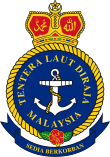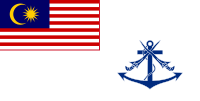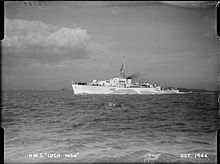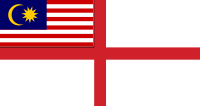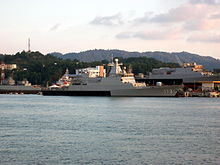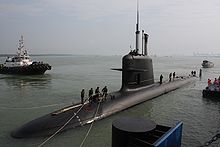
A frigate is a type of warship. In different eras, the roles and capabilities of ships classified as frigates have varied.
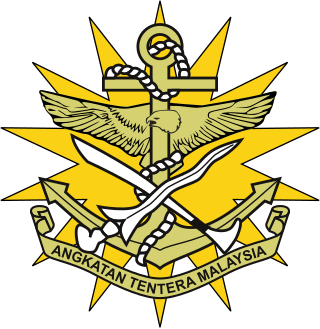
The Malaysian Armed Forces, are the armed forces of Malaysia, consists of three branches; the Malaysian Army, Royal Malaysian Navy and the Royal Malaysian Air Force. The number of MAF active personnel is 113,000 along with reserve forces at 51,600.

Standing Royal Navy deployments is a list of operations and commitments undertaken by the United Kingdom's Royal Navy on a worldwide basis. The following list details these commitments and deployments sorted by region and in alphabetical order. Routine deployments made by the Navy's nuclear-powered submarines and their location of operations is classified.

The Republic of Singapore Navy (RSN) is the maritime service branch of the Singapore Armed Forces (SAF) responsible for defending the country against any seaborne threats and as a guarantor of its sea lines of communications. The RSN traces its origins to the Royal Navy when Singapore was still a crown colony of the British Empire. The service was formally established in 1967, two years after its independence from Malaysia in 1965, and had undergone a substantial modernisation ever since – which has led them into becoming the most powerful navy in Southeast Asia.

The Commander-in-Chief Fleet (CINCFLEET) was the admiral responsible for the operations of the ships, submarines and aircraft of the British Royal Navy from 1971 until April 2012. The post was subordinate to the First Sea Lord, the professional head of the Naval Service. In its last years, as the Navy shrank, more administrative responsibilities were added.
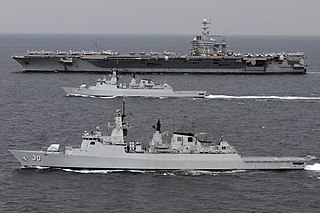
The Lekiu-class frigates are a class of frigates of the Royal Malaysian Navy. They are the largest and most modern surface combatants of the Royal Malaysian Navy, until the Maharaja Lela-class frigates are completed. The class comprises two vessels, KD Jebat and KD Lekiu. The class is named after the second ship of the class which was launched before Jebat.

The Kasturi-class corvettes are two ships of the Royal Malaysian Navy, KD Kasturi and KD Lekir. They were acquired in the mid-1980s. The two ships constitute the Royal Malaysian Navy's 22nd Corvette Squadron, their homeport being Lumut. After about 25 years of service, they underwent an extensive modernisation known as Service Life Extension Program (SLEP) starting in 2009, enabling them to be employed for another 10 to 15 years. They have since been returned to active duty.

The Kedah-class offshore patrol vessels of the Royal Malaysian Navy (RMN) are six ships based on the MEKO 100 design by Blohm + Voss. Originally, a total of 27 ships were planned, but due to programme delays and overruns, only six were eventually ordered. Their construction began in the early 2000s, and by 2009, all six were in active service. The six vessels are named after Malaysian states.
Penang Shipbuilding and Construction - Naval Dockyard Sdn Bhd (PSC-ND), was a division of the Penang Shipbuilding and Construction Industries Bhd (PCSI), a Malaysian shipbuilding company based in Lumut, Perak, Malaysia. The company's primary role is to maintain the Royal Malaysian Navy (RMN) fleet. However, a management and financial crisis in 2005 result the Malaysian Government to enforced the PSC-ND to be taken over by Boustead Heavy Industries Corporation and renamed as Boustead Naval Shipyard Sdn Bhd.

BRP Quezon (PS-70) was one of two Rizal-class ships in service with the Philippine Navy. She was formerly a USN Auk-class minesweeper produced during World War II, and was later on classified as a patrol corvette protecting the vast waters of the Philippines.

KA Bunga Mas Lima (BM5) is a container freighter purchased by the Royal Malaysian Navy (RMN) and converted into an auxiliary ship. Bunga Mas Lima was the second ship owned by the Malaysian International Shipping Corporation (MISC) to be deployed to the Gulf of Aden.
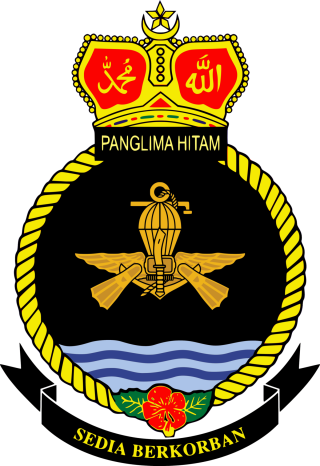
The Pasukan Khas Laut, commonly abbreviated to PASKAL, is the principal special operations force of the Royal Malaysian Navy.

The Maharaja Lela-class frigate, also known as the Littoral Combat Ship (LCS), is a class of six stealth frigates being built for the Royal Malaysian Navy (RMN). First announced as the Second Generation Patrol Vessel (SGPV) in 2011, the ships are based on an enlarged version of the Gowind-class corvette, designed by Naval Group, formerly known as DCNS of France.

Boustead Heavy Industries Corporation Berhad, often abbreviated as BHIC is a Malaysian industrial group specialised in defence, naval and commercial shipbuilding, ship repair, fabrication of offshore structures as well as maintenance, repair and overhaul of aircraft. The company is a public limited company and the largest shareholder is Armed Forces Fund Board, a government statutory body which provides retirement benefits and a savings scheme for officers of the Malaysian Armed Forces, with a 58.69% stake. The second largest shareholder is Retirement Fund (Incorporated), a company created by the Malaysian Government as an investment company, with a stake of 7.17%.
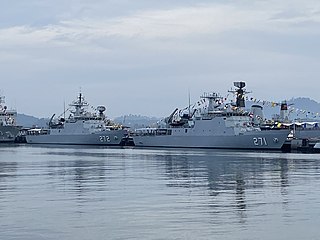
The Gagah Samudera class is a class of training ships of the Royal Malaysian Navy (RMN). The two ships were built jointly by Malaysia and South Korea under a shared development program, with one ship built in South Korea and the other in Malaysia, The ships, named KD Gagah Samudera and KD Teguh Samudera are currently in service. All RMN ships carry the prefix KD
Multi-Role Support Ship (MRSS) is a class of amphibious ship planned for the Royal Malaysian Navy (RMN).
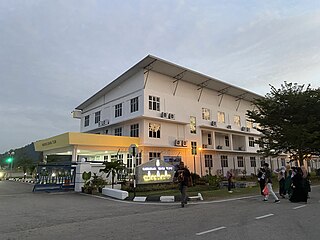
The Royal Malaysian Navy Aviation is the naval aviation branch of the Royal Malaysian Navy (RMN). RMN aviation also known as the KD Rajawali. It was based in Lumut, Perak and currently consisted of four squadron.

KD Syarif Masahor is the second ship of Maharaja Lela-class frigate built locally by Boustead Heavy Industries Corporation (BHIC). She build based on enlarged version of Naval Group's Gowind-class design. The ship named after Syarif Masahor, in honour of the Sarawak warrior during British colonialism.
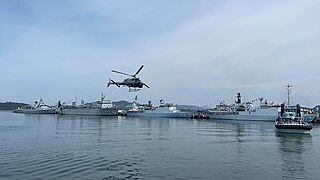
Lumut Naval Base is a Royal Malaysian Navy military base in Lumut, Perak, about 100 miles (160 km) from Kuala Lumpur. It is Malaysia's largest naval base, and it has served as the Royal Malaysian Navy's headquarters since 9 September 1984, replacing Woodlands Naval Base in Singapore. This base now serves as the headquarters for the Royal Malaysian Navy's (RMN) Western Fleet Command, while the Sepangar Bay Naval Base serves as the headquarters for the RMN's Eastern Fleet Command.
